Importance and Necessity of Multilingual Website Design

In today’s world, where geographical boundaries have less meaning in virtual space, having a website only in Persian might deprive you of countless opportunities.
Multilingual website design is not just an option, but a strategic necessity for businesses looking to expand their global reach.
This approach allows you to connect with a wider audience worldwide and offer your products or services in a language native to them.
The importance of this lies in the fact that users prefer to search for and receive information in their native language, and a website that fulfills this need will have a higher chance of attracting and retaining these users.
Correct language implementation plays a key role in the success of such websites.
The benefits of a multilingual website go beyond just content translation; they include understanding the cultures, preferences, and behaviors of users in different regions of the world.
With a multilingual platform, you can significantly increase your conversion rates and improve your international SEO.
This instructive approach is for any business that wants to make a mark in today’s competitive market.
Many leading companies worldwide leverage this capability to attract and retain their customers in various markets.
Ignoring this issue can lead to loss of market share and growth opportunities.
The first step in this path is a deep understanding of the target audience and the required languages.
This is a specialized task that requires careful planning and consistent execution.
Investing in multilingual website design means investing in the future of your business.
This helps you engage more constructively with the global market and make the most of its potential.
#Multilingual #BusinessExpansion #GlobalAudience.
Research shows that 80% of customers trust companies with professional websites more. Does your current website inspire this trust?
With Rasaweb’s corporate website design services, permanently solve the problem of customer distrust and a weak online image!
✅ Create a professional image and increase customer trust
✅ Attract more sales leads and business growth
⚡ Get free consultation
Competitive Advantages of Multilingual Websites

Multilingual website design is not just a feature, but a powerful competitive advantage in the global market.
When your website is available in multiple languages, you will be able to access new markets that were previously inaccessible to you.
This leads to a significant increase in incoming traffic and international brand recognition.
For example, a software company can reach potential customers in these countries by offering its website in Spanish, Chinese, and German, with whom it would otherwise never connect.
This makes your business appear distinct and superior in a competitive environment.
Increased conversion rate is another key advantage.
When visitors can read your content in their native language, they feel more comfortable and trusting.
This sense of trust directly influences their decision to purchase or use your services.
Studies have shown that users are more inclined to buy from websites that offer content in their language.
Furthermore, a multilingual website helps improve SEO.
By targeting keywords in different languages, you can increase your search engine rankings for international audiences.
This is an analytical approach to increasing visibility in search engines.
Additionally, multilingual websites allow you to provide more efficient customer support services.
Answering user questions and problems in their own language significantly improves their user experience and increases customer loyalty.
This is especially crucial for companies with global after-sales services.
This type of guidance and support plays a significant role in building a positive reputation for your brand.
Therefore, investing in multilingual website design is an investment in the sustainable growth and global success of your business.
Key Considerations Before Starting Design

Before embarking on the implementation phase of multilingual website design, it is essential to carefully review and plan several key points.
These initial steps form the foundation for your project’s success.
First, you need to identify your target audience.
Which countries and regions do you want to target? What are your primary required languages? Are there specific dialects or cultural differences that need to be considered? For example, Spanish in Spain and Latin America has differences that should be taken into account.
This stage involves precise market research and the collection of specialized data.
Next, estimate the required budget and resources.
Content translation, hiring professional translators, technical development, and multilingual site maintenance all incur costs that must be anticipated in advance.
Choosing a platform or Content Management System (CMS) is also crucial.
Does your current CMS support multilingual capabilities, or do you need to change? WordPress, Joomla, and Drupal are among the CMSs that offer robust plugins or modules for multilingual support.
Choosing the right CMS can reduce many technical complexities.
This is an explanatory step in the planning process.
Finally, define your international SEO strategy.
Will you use subdomains, subdirectories, or country-code Top-Level Domains (ccTLDs) for each language? This decision directly impacts the URL structure and the implementation of hreflang tags.
Also, consider engaging content for each market, as the interests and needs of each region might differ.
Careful planning in these initial stages prevents serious problems in the future and helps streamline the multilingual website design process.
| Factor | Description | Importance |
|---|---|---|
| Identifying languages and target audiences | Market research and selecting languages with the most potential. | Crucial |
| Budget and financial resources | Allocating sufficient budget for translation, development, and maintenance. | Very Important |
| Selecting a Content Management System (CMS) | A system with strong multilingual capabilities or support for relevant plugins. | Important |
| URL Structure Strategy | Determining the appropriate URL structure (subdomain, subdirectory, ccTLD). | Crucial for SEO |
| Translation and Localization Process | Planning for professional translation and cultural adaptation of content. | Very Important |
Technical Implementation of Multilingual Structure
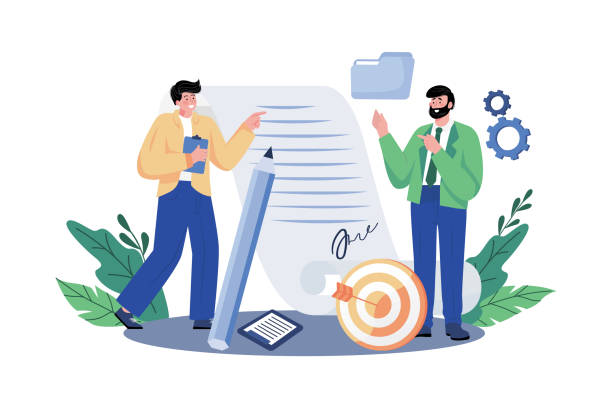
The technical implementation of multilingual website design involves several complex aspects that require careful attention from developers.
One of the most crucial technical decisions is choosing the URL structure for each language.
There are three main options: Country Code Top-Level Domains (ccTLDs) such as .de for Germany, subdirectories like example.com/fr, and subdomains like fr.example.com.
Each has its advantages and disadvantages in terms of SEO and management.
Using hreflang tags is essential for informing search engines about different language versions of a page and preventing duplicate content issues.
These tags help direct users to the appropriate language version of the website.
The Content Management System (CMS) plays a central role in this implementation.
You must ensure that your chosen CMS natively supports multilingual capabilities or has powerful plugins available for this purpose.
These plugins typically provide tools for managing translations, switching languages, and organizing content in different languages.
For instance, plugins like WPML for WordPress, or native modules in Drupal, provide easy management of multilingual content.
Otherwise, custom development will be necessary to implement these features, which can be costly and time-consuming.
Furthermore, attention must be paid to issues related to data storage and retrieval for different languages.
Ensuring that your database can store Unicode characters and is properly compatible with right-to-left languages (such as Persian and Arabic) is crucial.
Also, implementing a visual and user-friendly language switcher system in the user interface, such as a dropdown menu in the site’s header, is essential for improving user experience.
This part of multilingual website design requires specialized knowledge and meticulous planning to prevent future technical issues and provide an optimal user experience.
Are you worried about your e-commerce site’s low conversion rate and not achieving your desired sales?
Rasaweb is your specialized solution for having a successful e-commerce website.
✅ Significant increase in conversion rates and sales
✅ Professional and user-friendly design to attract customer satisfaction
⚡ Ready for an online sales transformation? Get a free consultation!
Content Management and Localization

Content management in a multilingual site goes beyond mere word-for-word translation; this process involves complete content localization for each target market.
Localization means adapting content to the culture, values, idioms, and even the sense of humor of local audiences.
This includes accurate translation of texts, images, videos, and even units of measurement and date/time formats.
For example, an advertising slogan that has a positive meaning in one language might be meaningless or even offensive in another.
Therefore, hiring native and specialized translators for each language is of utmost importance.
This not only guarantees translation accuracy but also preserves the cultural integrity of the content.
For effective management of this volume of content, using Translation Management Systems (TMS) or powerful multilingual capabilities in the CMS is essential.
These tools help make the content translation and update process simpler and more organized.
They typically offer features such as Translation Memory and Glossaries, which help maintain consistency in terminology and reduce translation costs in the long run.
Ensuring simultaneous update capability of content across all languages is also crucial to prevent inconsistencies.
This section requires a detailed and precise approach.
Additionally, considering sensitive or controversial content in different cultures is important.
What is acceptable in one country might not be in another.
Therefore, an analytical approach to content for each market prevents potential problems.
Managing images and multimedia files is also part of this process.
Sometimes, images or graphics need to be changed for different markets to be compatible with the cultural sensitivities of each region.
In summary, localization is an investment whose return is seen in increased user engagement and brand loyalty in multilingual website design.
International SEO Strategies
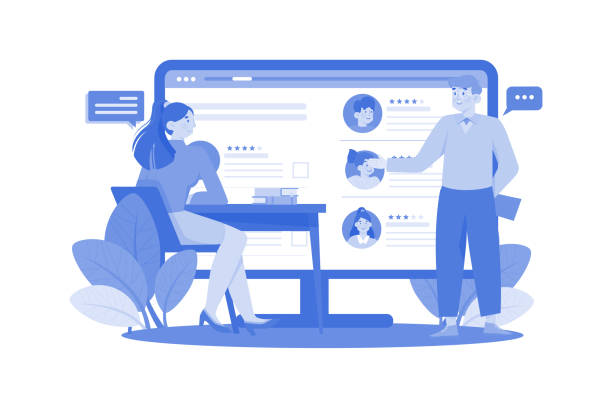
For your multilingual website design to be visible to international audiences in search engines, you need to implement targeted international SEO strategies.
The first step is keyword research.
You cannot simply translate your Persian keywords; you must identify highly searched and relevant keywords for each language and geographical region separately.
This involves understanding cultural differences in searches and using local keyword research tools.
This is a specialized activity that requires great precision.
As mentioned earlier, URL structure and hreflang tags are of great importance.
Proper use of hreflang helps Google and other search engines understand which page should be displayed to users in different regions and languages, and prevents penalties related to duplicate content.
Furthermore, optimizing Title Tags and Meta Descriptions for each language, considering relevant keywords and creating appeal for clicks, is crucial.
Link Building at an international level is also an important strategy.
Try to acquire links from local and reputable websites in each country.
This helps increase your domain’s authority in those regions.
Also, site loading speed is an important SEO factor; especially for international users who may use the internet at different speeds.
Using a CDN (Content Delivery Network) can help improve loading speed for users worldwide.
This is a comprehensive guide for optimizing your website.
Paying attention to engaging and attractive content to retain users is also part of indirect SEO.
Overall, an analytical and continuous approach to SEO is essential for the success of multilingual website design.
Tools and Platforms for Multilingual Design
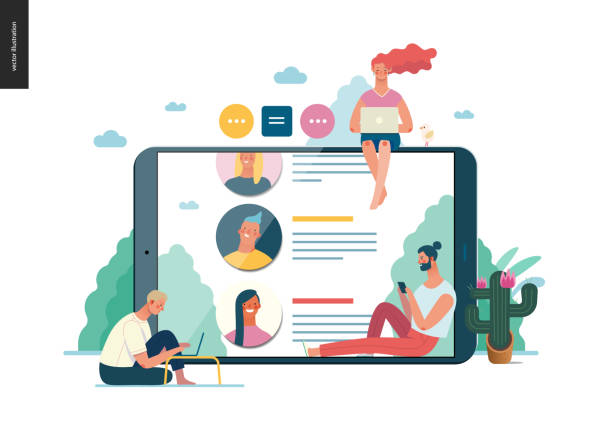
For successful implementation of multilingual website design, choosing the right tools and platforms is of paramount importance.
Today, many Content Management Systems (CMS) offer multilingual capabilities either natively or through plugins and modules.
WordPress with plugins like WPML (WordPress Multilingual Plugin) and Polylang, is one of the most popular options for building multilingual websites.
These plugins enable the translation of posts, pages, categories, tags, and even themes.
WPML specifically offers a comprehensive solution for managing translations and multilingual SEO.
Other powerful CMSs like Drupal and Joomla also have strong native multilingual capabilities.
Drupal is designed with multilingual support from the ground up and can effectively support complex sites with multiple languages.
Joomla, with its built-in language management features, is also a suitable option for many businesses.
In addition to CMSs, e-commerce platforms like Shopify and Magento also offer tools for managing multilingual online stores, which are crucial for international businesses.
These specialized tools facilitate the process.
Besides CMSs, there are other tools that can be useful in the multilingual website design process.
These tools include AI-powered translation platforms for initial translations or assisting human translators, as well as translation quality control tools.
Using a CDN (Content Delivery Network) is also recommended to improve website loading speed in different geographical regions.
The correct selection of these tools depends on the specific project needs, budget, and expertise of the development team.
This is a practical guide for choosing the appropriate technology.
| Platform | Multilingual Features | Suitable for |
|---|---|---|
| WordPress | Powerful plugins (WPML, Polylang), large user community | Blogs, small to medium corporate websites, small online stores |
| Drupal | Strong native multilingual capabilities, high flexibility | Large enterprise websites, complex portals, government websites |
| Joomla | Built-in language management, support for multiple languages for content | Medium corporate websites, community portals, non-profit websites |
| Shopify | Support for multiple languages via apps and themes, e-commerce | Online stores of any size |
| Magento | Strong multilingual and multi-store capabilities, highly flexible | Large and complex online stores, B2B businesses |
Common Challenges and Solutions

Multilingual website design comes with its specific challenges that need to be addressed with appropriate solutions.
One of the biggest challenges is managing translation quality.
Machine translation, while fast, often lacks the necessary accuracy, fluency, and cultural sensitivities.
The solution is to always use native and professional human translators who are not only fluent in the language but also fully familiar with the target culture.
This can be costly, but it guarantees content quality and prevents cultural misunderstandings.
Another challenge is maintaining and updating content in multiple languages.
Every time new content is added or existing content changes, it must be ensured that all language versions are also updated quickly.
This can be very time-consuming and complex.
Using a Content Management System (CMS) with strong multilingual capabilities and Translation Management Systems (TMS) can help automate part of this process and increase efficiency.
Additionally, planning a detailed content calendar for each language can be beneficial in this regard.
This is an instructional section for the content team.
SEO and performance issues can also be challenging.
Ensuring that hreflang tags are correctly implemented, site loading speed is optimized in different regions, and local keywords are properly targeted requires continuous monitoring and adjustments.
You might also encounter technical issues such as incorrect redirects or hosting problems in different regions.
Continuous monitoring with webmaster tools and conducting regular performance tests are essential solutions to overcome these challenges.
This article provides the necessary guidance.
Do you know that a weak corporate website loses you many opportunities daily? With professional corporate website design by Rasaweb, solve this problem permanently!
✅ Create a powerful and trustworthy image for your brand
✅ Attract targeted new customers and increase sales
⚡ [Get Free Website Design Consultation]
User Experience and Cultural Differences
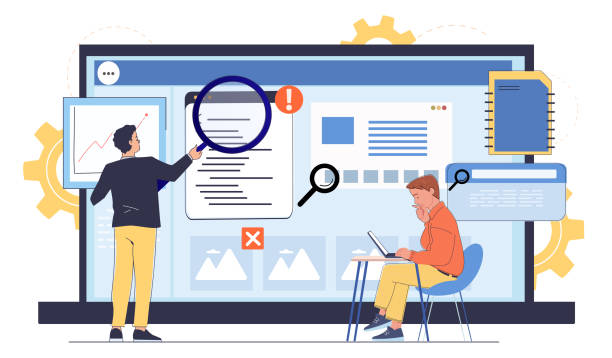
The success of multilingual website design is not limited to accurate content translation; rather, it depends on providing a native User Experience (UX) tailored to different cultures.
This includes designing a User Interface (UI) that is compatible with writing direction (right-to-left or left-to-right), date and time formats, currency, and even common colors and symbols in each culture.
For example, the color red symbolizes good luck in some cultures, while in others it might signify warning or danger.
Ignoring these differences can lead to user confusion or even offense.
The Language Switcher should be easily accessible and visible.
It is usually placed in the website’s header or footer.
Using the language name instead of country flags is recommended, as one language might be spoken in multiple countries, and flags can cause confusion.
A user-friendly interface means that every user, regardless of their language, can easily navigate the site.
Page loading speed also plays a key role in user experience, especially in regions with lower bandwidth.
Furthermore, considering engaging and localized content that aligns with the interests and humor of the local people can significantly increase user interaction.
This includes using examples, stories, and cultural references that are understandable and appealing to the local audience.
An analytical approach to user data can help identify behavioral patterns in different regions and provide the necessary optimizations for improving multilingual user experience.
Overall, paying attention to cultural aspects in multilingual website design is crucial for establishing a deep and lasting connection with international audiences.
Future Trends and Best Practices
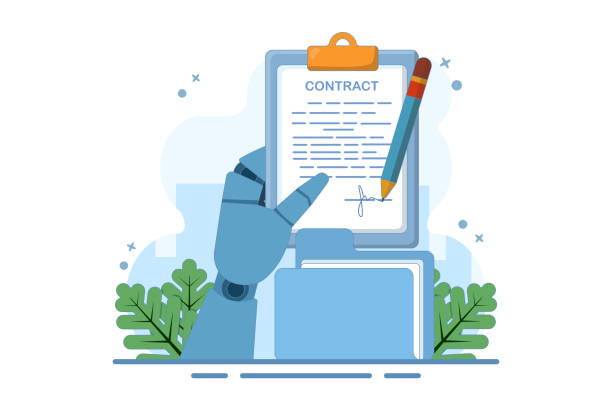
As technology and user expectations evolve, multilingual website design is also undergoing changes and transformations.
One of the key trends is the advancement of Artificial Intelligence (AI) in translation and localization.
While machine translation still cannot replace human translators, AI-powered tools are becoming increasingly accurate and efficient and can be used as supplementary tools to speed up the translation process and maintain consistency.
It is expected that in the future, AI will play a more prominent role in personalizing content based on the user’s geographical location and language preferences.
Another trend is a greater focus on personalized user experience.
Future multilingual websites will not only provide content in the user’s language but will also adapt the overall site experience based on the user’s location, past behavior, and even the device used.
This includes displaying products and services relevant to the region, providing prices in local currency, and even suggesting news content or local events.
International standards for language codes also play a crucial role in this regard.
Best practices in multilingual website design include continuous maintenance of international SEO, monitoring site performance in different regions, and updating content according to cultural and linguistic changes.
This is an analytical and continuous process that requires constant attention.
Furthermore, investing in training content teams and developers to better understand the challenges and opportunities of the global market is of great importance.
By considering these trends and following best practices, businesses can leverage the full potential of multilingual website design to achieve sustainable success on a global scale.
This is a vital guide for the future.
Frequently Asked Questions
| Question | Answer |
|---|---|
| What is multilingual website design? | The process of creating a website whose content is available to users in more than one language. |
| Why should I make my site multilingual? | To reach a larger global audience, improve user experience for non-native speakers, and increase sales or engagement. |
| What are the methods for implementing a multilingual site? | Using subdomains, subdirectories, or URL parameters, or using different Top-Level Domains (TLDs) for each language. |
| Which method is better for SEO? | Generally, using subdirectories (e.g., example.com/fa/) is recommended for SEO, as they share the main domain’s authority. |
| What is the hreflang tag and what is its use? | The hreflang tag is an HTML attribute that helps search engines understand which version of a page is suitable for a specific language or region. |
| Is machine translation sufficient for multilingual site content? | Usually no. For a good user experience and maintaining credibility, professional translation and content localization are essential. |
| What does Localization mean? | The process of adapting the content, design, and functionality of a website to the culture, language, currency, and other specific characteristics of a target region or country. |
| What is the importance of language selection in multilingual website design? | Users should be allowed to easily select their desired language, usually via a clear button or menu in the site’s header. |
| What challenges exist in multilingual website design? | Managing content in different languages, maintaining consistency in design and user experience, multilingual SEO, and translation and maintenance costs. |
| What features should a suitable Content Management System (CMS) have for a multilingual site? | It should allow easy management of content in different languages, support multilingual URL structures, and have plugins related to translation and localization. |
And other services of Rasaweb Advertising Agency in the field of advertising
Smart Content Strategy: Revolutionize user engagement with precise audience targeting.
Smart Link Building: An innovative service for increasing customer behavior analysis through precise audience targeting.
Smart UI/UX: A fast and efficient solution for improving SEO ranking with a focus on marketing automation.
Smart Website Development: Professional optimization for increasing website traffic by customizing user experience.
Smart Direct Marketing: A fast and efficient solution for user engagement with a focus on SEO-driven content strategy.
And over hundreds of other services in internet advertising, advertising consultation, and organizational solutions
Internet Advertising | Advertising Strategy | Advertorials
Resources
How to create a multilingual website?
Multilingual site SEO and everything you need to know about it
Key tips for multilingual website design
Multilingual website design and its benefits for your business
? Is your business ready for a big leap in the digital world? Rasaweb Afarin Digital Marketing Agency, specializing in professional website design and providing comprehensive online marketing solutions, paves your way to growth and visibility.
📍 Tehran, Mirdamad Street, next to Bank Markazi, Southern Kazeroon Alley, Ramin Alley, No. 6


